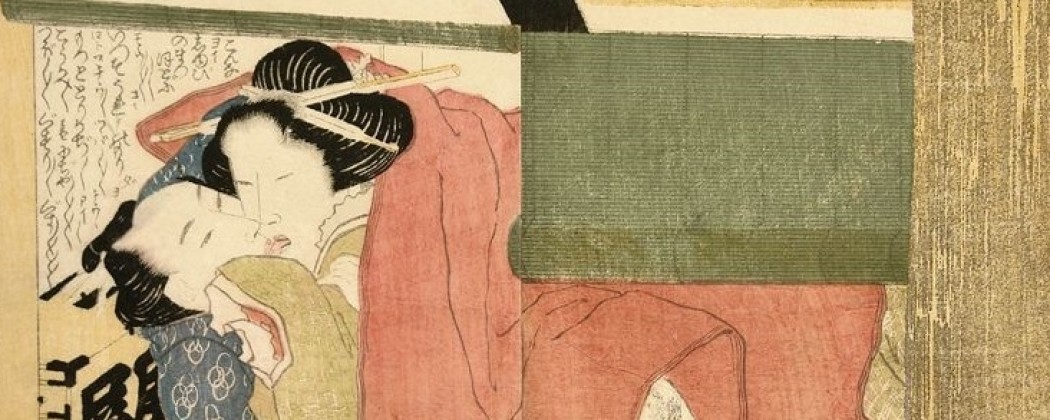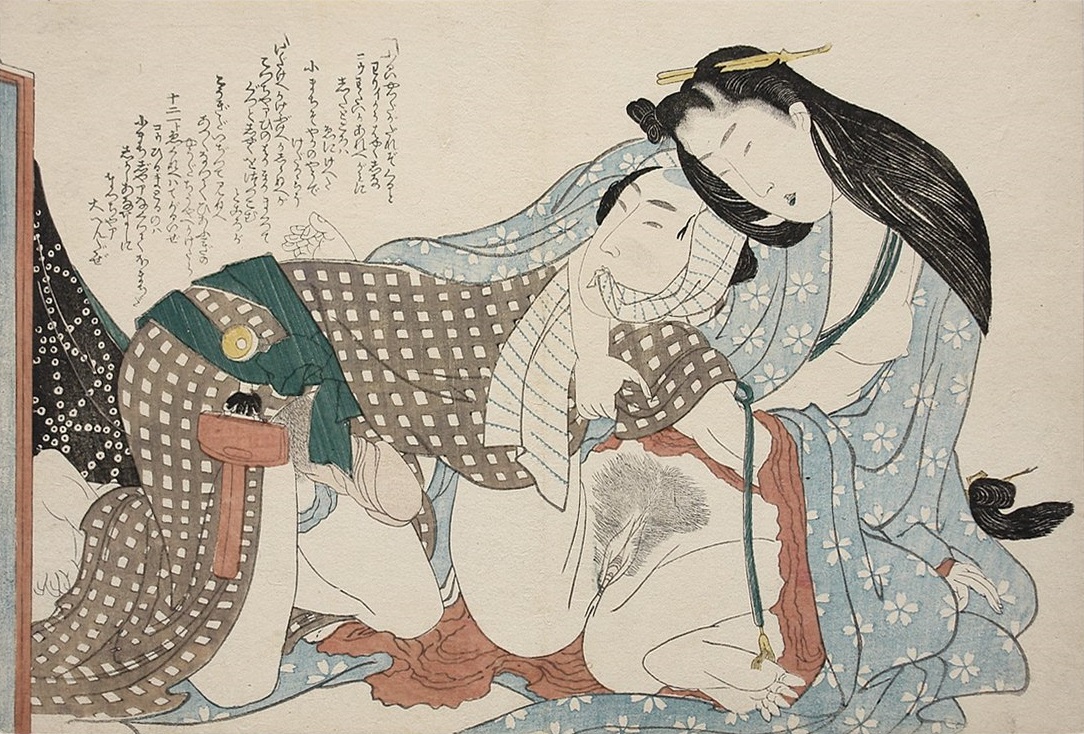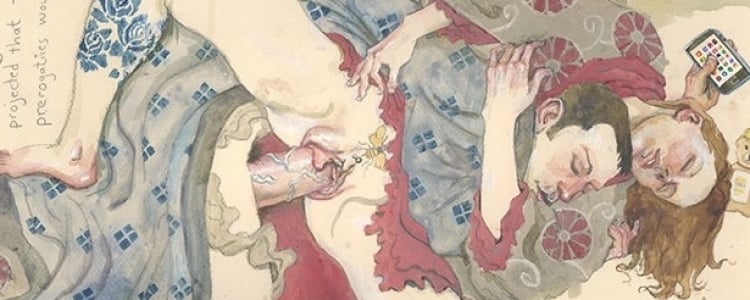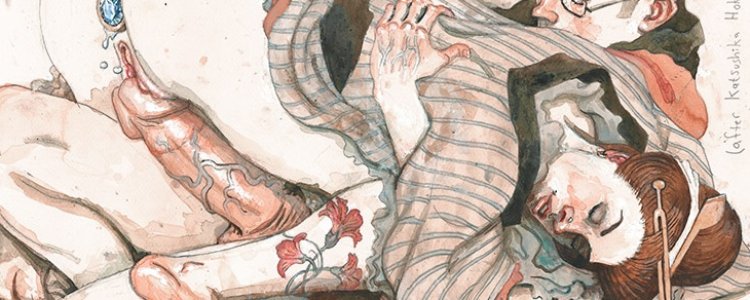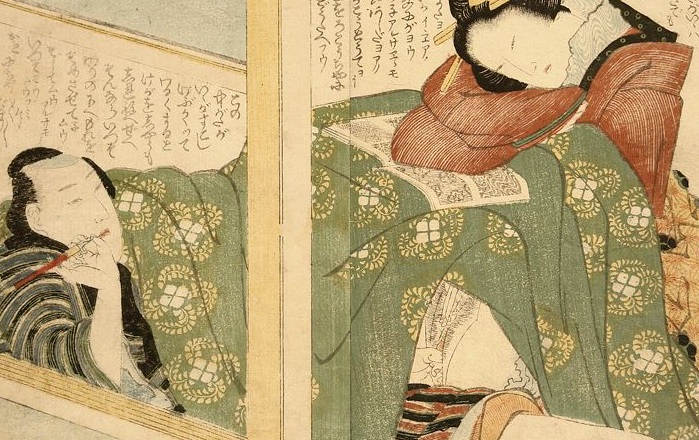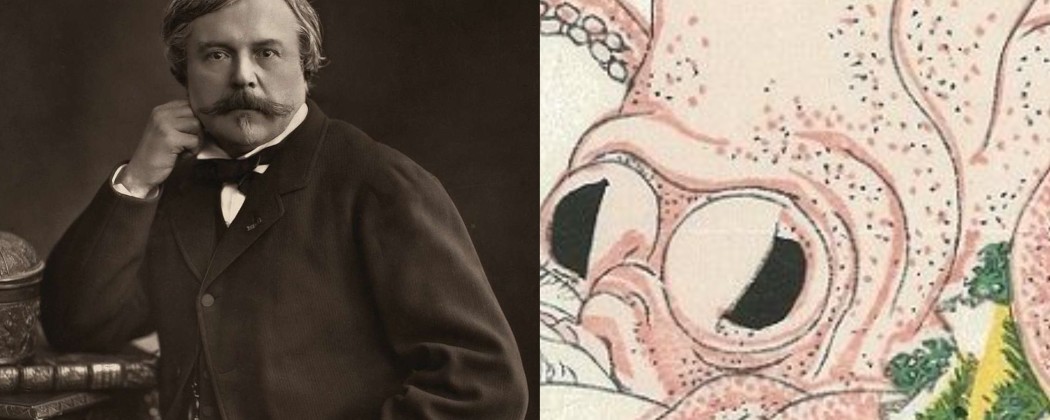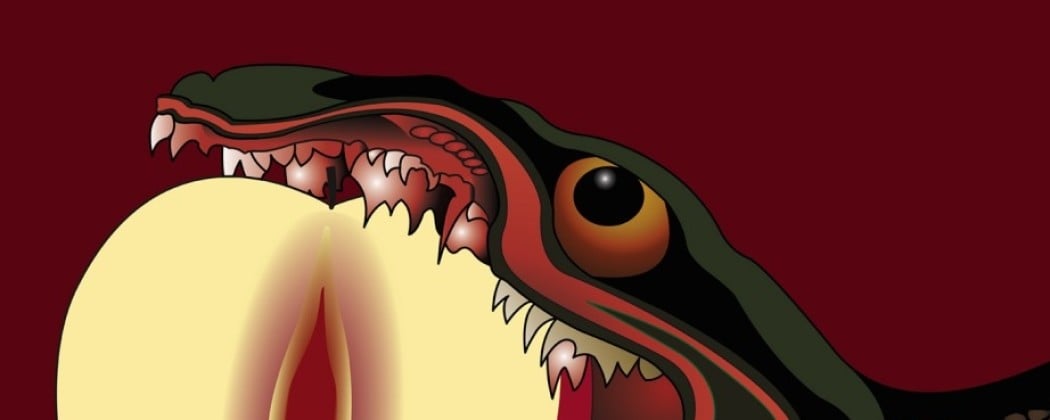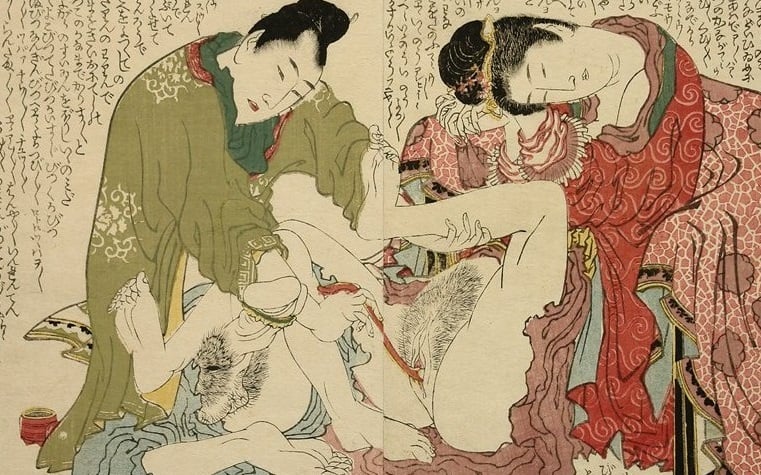
Kinoe no Komatsu (Pining for Love) marks a turning point in Hokusai‘s career in which he intensified and reached a high level of quality in his erotic albums. His depiction of the human figure changed radically, acquiring a fuller, more opulent and fleshier form, expressing a vigorous, powerful sensuality.
Hokusai‘s attention and care for the smallest details even in (at the time) cheap book as this is fascinating. This is visible in the depiction of the green band around the penis of the aristocratic man who is collecting his lover’s vaginal fluids (Fig.4.).

Fig.2. ‘Intercourse Close-up’ (c.1814) from the series ‘Kinoe no Komatsu‘
Close-up Genitals
Each volume begins with a close-up of an attractive woman (Fig.1.), followed by seven double-page illustrations of intimate couples, ending with a close-up of the genitals of the woman shown at the beginning (Fig.2.). Nearly all the images present women as passionate, often taking the initiative.
The following four designs are some of the striking examples of Kinoe no Komatsu:

Fig.3. ‘Man using sex toy‘ (c.1814) from the series ‘Kinoe no komatsu (Young Pine Saplings)‘ by Katsushika Hokusai
Bounded Penis
Lovers at a climatic moment. The woman’s blue crumpled undergarment is a favourite detail in Hokusai‘s shunga (it also appears in white and red). It adds a special accent to many of his erotic pictures, as do the intricately patterned robes. The man uses a sex toy called higozuiki, a dried taro (arum maculatum) stalk that was wound around the penis, supposedly to enhance the woman’s enjoyment.

Fig.4. ‘Extracting vaginal fluids‘ (c.1814) from the series ‘Kinoe no komatsu (Young Pine Saplings)‘ by Katsushika Hokusai
Vaginal Fluids
A Japanese lover of aristocratic descent collects vaginal fluid with a ladle. In the past those depicted have been wrongfully discerned as a Chinese couple. A notion that foreigners – Chinese as well as Europeans – were very keen on collecting vaginal fluids for medicinal or other uses, was very popular in Edo Japan.

Fig.5. ‘Insatiable lovers‘ (c.1814) from the series ‘Kinoe no komatsu (Young Pine Saplings)‘ by Katsushika Hokusai
Wad of Tissues
A couple making love in the missionary pose. Both are naked except for a crumpled undergarment draped in such a way that it appears to hold the two figures together. Various items are seen in the foreground: a fan and a wad of tissues, the latter an element often included in shunga.
Like many other apparently random paraphernalia, the wad of tissues (onkotogami) is actually one way to inform the attentive reader about the context of the scene. A neatly wrapped wad tells us that the lovers’ amorous encounter has just begun. A scene in which many used tissues are scattered about indicates that love-making has been going on for some time.

Fig.6. ‘Dream of the Fisherman’s Wife‘ (c.1814) from the series ‘Young Pine Saplings (Kinoe no komatsu)‘ by Katsushika Hokusai
Dramatic Eroticism
The most striking image in Kinoe no Komatsu is off course the famous print known as “The Dream of the Fisherman’s Wife,” is an absolute masterpiece of erotic illustration. Edmond de Concourt wrote of this image in 1896, and it is emblematic of the dramatic eroticism of the age of Hokusai.
The woman, wrapped in the tentacles of the octopuses who suck her, is in a pose that ambiguously suggests the sensual abandonment to ecstacy of the erotic dream at the same time as she appears to be a corpse. The image has become a masterpiece of the “aesthetic of the grotesque” in Japanese erotic art, by Richard Lane’s definition.





